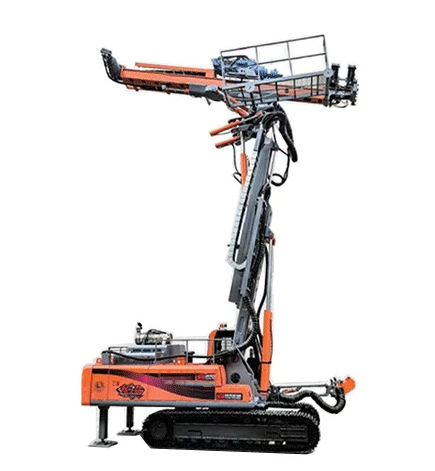 English
English שפה עברית
שפה עברית  Kurdî
Kurdî  Español
Español  Português
Português  русский
русский  tiếng Việt
tiếng Việt  ภาษาไทย
ภาษาไทย  Malay
Malay  Türkçe
Türkçe  العربية
العربية  فارسی
فارسی  Burmese
Burmese  Français
Français  日本語
日本語  Deutsch
Deutsch  Italiano
Italiano  Nederlands
Nederlands  Polski
Polski  한국어
한국어  Svenska
Svenska  magyar
magyar  বাংলা ভাষার
বাংলা ভাষার  Dansk
Dansk  Suomi
Suomi  हिन्दी
हिन्दी  Pilipino
Pilipino  Gaeilge
Gaeilge  Indonesia
Indonesia  Norsk
Norsk  تمل
تمل  český
český  ελληνικά
ελληνικά  український
український  Javanese
Javanese  தமிழ்
தமிழ்  తెలుగు
తెలుగు  नेपाली
नेपाली  български
български  ລາວ
ລາວ  Latine
Latine  Қазақша
Қазақша  Euskal
Euskal  Azərbaycan
Azərbaycan  Slovenský jazyk
Slovenský jazyk  Македонски
Македонски  Lietuvos
Lietuvos  Eesti Keel
Eesti Keel  Română
Română  Slovenski
Slovenski
What's the Cost-Benefit Analysis of Leasing vs. Buying an Anchoring Rig?
2025-10-14
What's the Cost-Benefit Analysis of Leasing vs. Buying an Anchoring Rig?
The decision to lease or purchase a multi-functional anchoring drilling rig is a significant financial and operational consideration for any contracting business. There is no universally correct answer, as the optimal choice depends on a company's financial health, project portfolio, long-term strategy, and the prevailing market conditions. A thorough cost-benefit analysis, looking beyond the initial price tag to the total cost of ownership and the strategic flexibility offered by each option, is essential for making a sound business decision.
The primary benefit of purchasing a multi-functional anchoring drilling rig is long-term asset ownership and control. For a company with a steady, predictable workflow that aligns with the rig's capabilities, the cost per hour of operation decreases over time once the capital cost is amortized. Ownership eliminates recurring lease payments and provides full autonomy over the equipment's use, maintenance schedule, and customization. The rig becomes a capital asset on the balance sheet that can be depreciated for tax purposes. Furthermore, if the rig is well-maintained, it retains a significant residual value that can be realized through a future sale. This path is often chosen by established firms with strong cash reserves and a specialized, recurring need for the rig's functions.

However, ownership carries substantial financial and operational burdens. The initial capital outlay for a new multi-functional anchoring drilling rig is very high, which can strain cash flow and limit a company's ability to invest in other areas, such as workforce development or marketing. The owner also bears all risks associated with the asset, including unexpected repair costs, technological obsolescence, and fluctuations in its market value. There is also the risk of under-utilization; if the rig sits idle between projects, it is not generating revenue but still incurs costs for insurance, storage, and financing. The responsibility for maintenance, sourcing parts, and managing a dedicated maintenance crew falls entirely on the owner.
Leasing a multi-functional anchoring drilling rig, on the other hand, offers superior financial and operational flexibility. It requires a much smaller upfront financial commitment, preserving capital for other operational expenses or opportunities. Lease payments are typically treated as operating expenses, which can be beneficial for tax reporting. This model effectively transfers the risks of obsolescence and major repairs to the lessor, providing predictable monthly costs and protecting the lessee from volatile maintenance bills. Leasing is an excellent strategy for tackling a specific project that requires a specialized rig, for bridging a short-term capacity gap, or for testing a new market or technology without making a long-term investment.
The drawbacks of leasing are primarily economic over the long run and involve a lack of control. Continuous lease payments do not build equity in the asset; the company is essentially renting the multi-functional anchoring drilling rig indefinitely. Over a long period, the cumulative lease costs can exceed the purchase price of the equipment. There may also be usage restrictions in the lease agreement, such as annual hour limits or penalties for wear and tear, which can limit operational flexibility. The lessee is also dependent on the lessor's equipment availability and may not have the same priority as an owner if a specific rig is needed for an urgent project. The decision, therefore, hinges on a careful projection of the rig's utilization rate, an analysis of the company's cost of capital, and a clear-eyed assessment of its strategic direction. For a stable, long-term need, buying may be more economical. For dynamic markets or specialized, short-term needs, leasing a multi-functional anchoring drilling rig often provides the better risk-reward balance.




